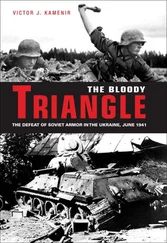About thirty girls anxiously signed up—all, not surprisingly, pretty, eager and naive. A week later, with their meager possessions, they boarded a bus. The excitement was palpable. And that was it. Instead of heading east to China, the bus barreled south, deep into Western Europe. The destination was a town in Germany, where they were taken to an apartment, locked up and deprived of food and water. The girls’ dreams quickly degenerated into a grueling nightmare. They were yelled at constantly. Sometimes they were beaten. A few days later they were herded into the living room and ordered to disrobe before a group of men with bodyguards in tow. The thugs ogled the girls and began bidding, buying the orphans outright in lots of three, four and five. The girls were then distributed to various German brothels, where they were forced to have sex with up to ten men a day. Over a period of six months, a few managed to escape. Others were scooped up in police raids. Only then did the story of this horrific deception make its way back to the orphanages.
It’s important to note that in the sordid underbelly of the international flesh trade, not every woman is an innocent dupe. In fact, police and government officials often go to great lengths to stress that some of these women willingly enter the trade. In their eyes, perhaps, this so-called willingness justifies their apathy and indifference. Nothing, however, could be further from the truth. Even the “willing” women have no idea of what really awaits. It’s true that many women know full well when they accept a job offer that they’ll be working in some aspect of the sex industry—massage parlors, strip clubs, peep shows and escort agencies. Depending on who’s assessing the situation— police, social workers, bureaucrats or women’s rights groups— the estimates of how many sign on “knowingly” range from 30 to 80 percent. Yet the vast majority of these women aren’t aware of the exact nature or conditions of the work. Those who agree to work abroad as prostitutes and escorts are led to believe they will do so under specific conditions. They’re told they will earn $5000 a month, live in a luxury apartment, have two days off a week, service two or three clients a night and never have to go with a man they don’t like. The “contract” is often for a mere three months, at which point the women are told that they will be free to leave.
Many of these women venture out with visions of the film Pretty Woman dancing in their heads. They expect to rake in lots of fast money and in the process perhaps even meet Mr. Right.
But those fantasies are shattered when, within moments of arriving at their destinations, they learn their true fate. Most end up in situations of incredible debt bondage, unable to earn enough to pay back the high interest on their travel and living expenses. They become victims of the worst possible forms of sexual exploitation. They are not free to leave, nor can they easily escape. They are sold to pimps or brothel owners on the open market, and soon find themselves trapped in abusive situations in which they are forced to have sex with as many as ten, twenty or thirty clients a day. They cannot refuse a customer or a demand. They are not allowed sick days. They do not get time off for their period. Some end up pregnant and having abortions. Many acquire HIV or other sexually transmitted diseases, not to mention the psychological and medical problems that come from constant abuse and gang rape. Some become alcoholics. Others become drug addicts. Often their pimps addict them to heroin to ensure they comply with all their demands.
All in all, no matter how “willing” they were and regardless of how they fell into the trafficking trap, the vast majority of these women end up as nothing more than slaves—abused, used and traded. And when they’re no longer useful or when they’ve gotten too old or too sick and riddled with disease, they are simply discarded. Only then can they contemplate returning home. Countless others never do go home. Many die from the abuse and the diseases. Others give up and kill themselves.
ONCE THESE WOMEN ARE RECRUITED—or captured or stolen—a well-oiled trafficking system kicks into gear. Criminal organizations use a variety of mechanisms to transport their human cargo across international borders. Many do so via channels that seem completely legal, thanks to student, tourist or temporary work visas. In some countries, women can get visas to work as exotic dancers or artists. Others enter as “mail-order brides.” They then overstay their visas and slip into the netherworld of illegal migrants.
When these seemingly legal avenues aren’t available, however, the traffickers turn to professional smugglers. Organized crime groups have established a massive and intricate network of routes through which they move women to different countries by land, water and air. These smuggling routes literally crisscross the globe and are controlled virtually every step of the way by interconnected criminal networks. In fact, most of the routes were carved out long ago by traffickers to smuggle illegal weapons or drugs. The recent explosive demand for Eastern and Central European women has simply attracted another black-market commodity to these well-trodden paths.
Professional traffickers, used to circumventing border crossings, engage border authorities in a never-ending game of cat and mouse. They constantly vary their routes to keep one step ahead of the law, moving the women across borders with relative ease. Along the serpentine border of the European Union, smugglers have established a complex system of well-protected corridors by exploiting “green borders” or unguarded frontiers. One of the more significant overland corridors is known as “the Eastern Route” and winds through Poland and into Germany. Once the traffickers and their victims are inside the European Union, all member nations are fair game and movement for organized crime becomes relatively unfettered. The women smuggled through this route come from Russia, Ukraine, Romania, Latvia, Lithuania and Estonia, and are found in disturbing numbers in Italy, Greece, Germany, Belgium, Austria and France.
The most notorious corridor is the Balkan route. It weaves its way through Serbia, Croatia, Albania, Macedonia, Bosnia-Herzegovina, Montenegro and Kosovo. During the bloody civil war that ripped the former Yugoslavia apart, criminal organizations established a strong foothold in the region. Their illicit contraband involved weapons and drugs. With the fighting now over, the Balkan route is used to smuggle illegal drugs, cars and women. This clandestine route traverses the Balkan territory, the key destination being the European Union. Italy is a prime target, providing easy access to many of the other countries in Europe. The Balkans, however, aren’t just transit points, thanks to the massive influx of United Nations peace-keepers and international humanitarian aid workers. Shockingly, their presence has provided a valuable, readymade market for local brothel keepers trading in trafficked women.
In Moldova, the path to sexual servitude often starts in a tiny, impoverished village, moving swiftly through Romania and into Hungary or Montenegro. Then it’s on to processing centers in Serbia. Women from Ukraine, on the other hand, are usually taken to Belgrade through Hungary and then distributed to Bosnia or Italy. Romanians cross into Serbia at the Iron Gates on the Danube River, while Bulgarian women are usually smuggled directly into the country. The route from Serbia to Italy is either overland—through Bosnia, Croatia and Slovenia—or through the Albanian seaport towns of Vlorë and Durres, where women cling to high-speed rubber dinghies charging across the Adriatic Ocean to the Italian coast.
Читать дальше












